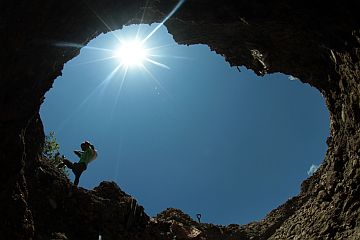WE may be entering the wet and rainy season now but don’t be surprised if you still find yourself sweating profusely.
The Philippine Atmospheric, Geophysical and Astronomical Services Administration (Pagasa) in Mactan said that the temperature in Cebu reached record high this week.
Al Quiblat, Pagasa Mactan chief, said they recorded a temperature of 35.2 degrees Celsius at 2 p.m. on Thursday, the highest they have recorded so far in the last two decades.
The heat index, on the other hand, reached 42 degrees.
Quiblat said the highest temperature they recorded in Cebu was 35.6 degrees Celsius, which was in 1998.
The hot weather, Quiblat said, was the result of the absence of rain in the last few days.
Pagasa only recorded 17 millimeters (mm) of rainfall for the months of June and August, which is way below its average of at least 151 mm.
He said that Cebu needs around 660,000 drums of rainfall to reach its average rainfall requirement for the third quarter of the year.
Quiblat said that the southwest monsoon or habagat, which brings rainshowers to the country, has not been very helpful in alleviating the extreme heat.
“Every time nga dunay bagyo sa eastern portion sa country, duna siyay atbang nga bad weather system sa west portion sa West Philippine Sea nga magbahin sa bira sa habagat (Every time there is a typhoon on the eastern part of the country, a bad weather system would also form on the western portion of the West Philippine Sea that will also pull the habagat), “ he said.
Prepare for El Niño
Quiblat warned that Cebu’s temperature could get even hotter when the El Niño phenomenon, which is marked by extreme heat and dryness, starts to affect the island in November or December this year.
Based on Pagasa’s projections, Quiblat said that there is now a 68 percent change of the El Niño phenomenon to begin by the last quarter of the year.
The El Niño may even be felt earlier, in September, if low rainfall would continue to be experienced next month, he said.
He asked Cebuanos to refrain from too much exposure to the sun especially between 12 noon to 3 p.m.
It is also important to stay hydrated to avoid ailments like heat stroke, skin rashes and heat cramps that may result from too much exposure to the hot weather.
Quiblat said that while they were yet to asses how the expected dry spell would affect Cebu, this early he was asking Cebuanos to prepare for it.
He said that excessive heat will especially affect Cebu’s water supply.
“Daghang apektado kay maapektuhan labi na ang supply sa potable nga tubig (A lot of people will be affected especially if the supply of potable water will start to dwindle),” he said.
Provincial Disaster Risk Reduction and Management Office (PDRRMO) chief Baltazar Tribunalo Jr. said that he would meet with local disaster officers to lay out plans to reduce the ill effects of El Niño, particularly on farm lands.
Cebu City gets ready, too
The Cebu City Agriculture Office (CAO) is also preparing contingencies to prepare the city’s residents to deal with the El Niño weather phenomenon.
“Technology-wise, we are ready for the El Niño,” said CAO officer in charge Apple Tribunalo.
However, Tribunalo admitted that their preparations for El Niño were challenged by the constant heat affecting Cebu in recent days, said Tribunalo.
“Some water sources are now depleting,” added Tribunalo.
The CAO has prepared hoses, drums and tanks which will be distributed to different barangays and farming communities for water storage before the drought strikes.
“We encourage the farmers to harvest the available water on the community and store them in order not to waste resources,” Tribunal said.
New farming techniques that use minimal water are also encouraged by CAO, such as the plastic mulching technique and the Tom’s newspaper technology.
Tom’s newspaper technology was the brainchild of Mayor Tomas Osmeña, which involves using newspaper to serve as sponge in potted plants to save water.
As for livestock, Tribunalo also encouraged raising hogs in an environment around sawdust or rice hulls to minimize water consumption since the hogs no longer need to be bathed as much.
Tribunalo said the El Niño phenomenon has become a norm because of climate change.
With this, CAO has incorporated the climate smart approach to farming and livestock raising in the training sessions they conducted in different agricultural communities, he said. /WITH USJ-R JOURNALISM INTERN DELTA DYRECKA LETIGIO


